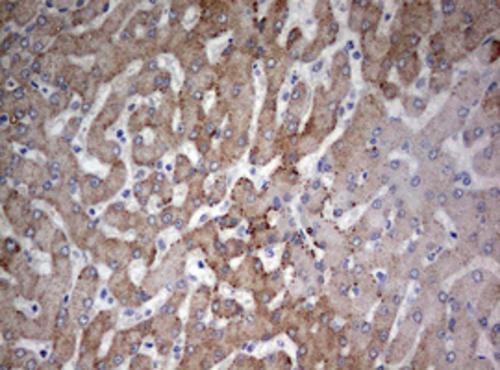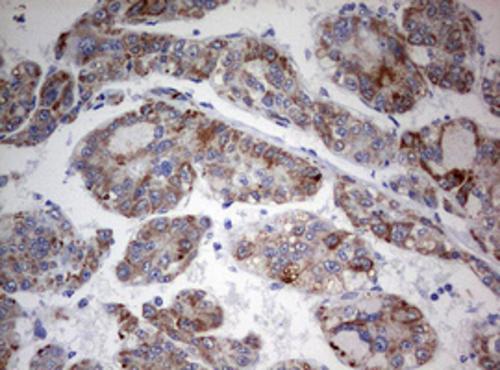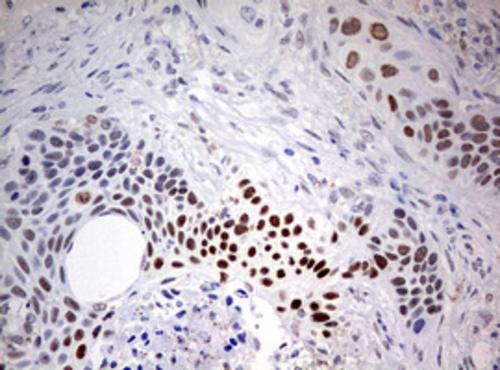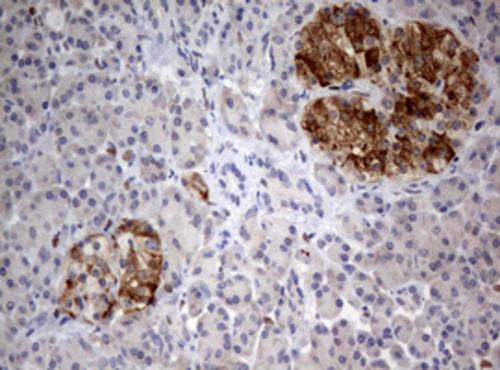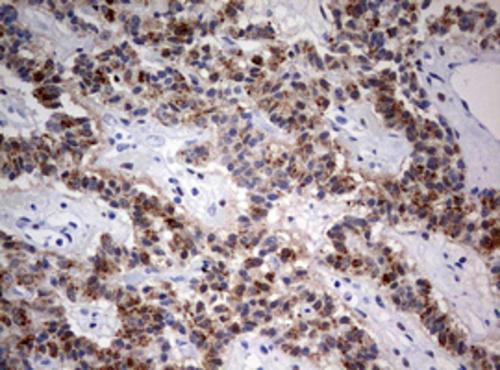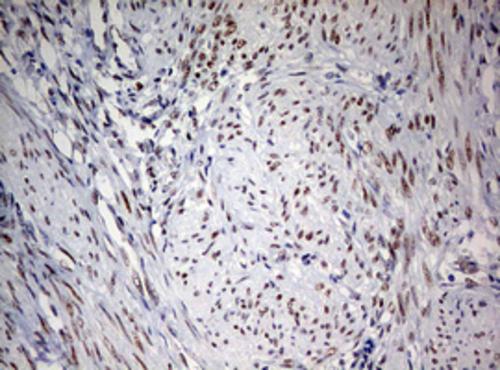FEN1 Mouse Monoclonal Antibody [Clone ID: OTI1F3]
CAT#: TA802762
FEN1 mouse monoclonal antibody, clone OTI1F3 (formerly 1F3)
Size: 30 ul
Formulation: Carrier-Free
View other "OTI1F3" antibodies (4)
Need it in bulk or conjugated?
Get a free quote
CNY 1,999.00
CNY 2,700.00
CNY 3,080.00
CNY 300.00
CNY 1,430.00
CNY 2,900.00
CNY 6,650.00
CNY 9,998.00
Specifications
| Product Data | |
| Clone Name | OTI1F3 |
| Applications | IHC, WB |
| Recommend Dilution | WB 1:2000, IHC 1:150 |
| Reactivity | Human, Mouse, Rat |
| Host | Mouse |
| Clonality | Monoclonal |
| Immunogen | Human recombinant protein fragment corresponding to amino acids 117-380 of human FEN1 (NP_004102) produced in E.coli. |
| Formulation | PBS (pH 7.3) containing 1% BSA, 50% glycerol and 0.02% sodium azide. |
| Concentration | 1 mg/ml |
| Purification | Purified from mouse ascites fluids or tissue culture supernatant by affinity chromatography (protein A/G) |
| Conjugation | Unconjugated |
| Storage Condition | Store at -20°C as received. |
| Predicted Protein Size | 42.4 kDa |
| Gene Name | flap structure-specific endonuclease 1 |
| Database Link | |
| Background | The protein encoded by this gene removes 5' overhanging flaps in DNA repair and processes the 5' ends of Okazaki fragments in lagging strand DNA synthesis. Direct physical interaction between this protein and AP endonuclease 1 during long-patch base excision repair provides coordinated loading of the proteins onto the substrate, thus passing the substrate from one enzyme to another. The protein is a member of the XPG/RAD2 endonuclease family and is one of ten proteins essential for cell-free DNA replication. DNA secondary structure can inhibit flap processing at certain trinucleotide repeats in a length-dependent manner by concealing the 5' end of the flap that is necessary for both binding and cleavage by the protein encoded by this gene. Therefore, secondary structure can deter the protective function of this protein, leading to site-specific trinucleotide expansions. [provided by RefSeq, Jul 2008] |
| Synonyms | FEN-1; MF1; RAD2 |
| Reference Data | |
| Protein Families | Druggable Genome, Stem cell - Pluripotency |
| Protein Pathways | Base excision repair, DNA replication, Non-homologous end-joining |
Documents
| Product Manuals |
| FAQs |
| SDS |
Resources
| 抗体相关资料 |
Other Versions
| SKU | Description | Size | Price |
|---|---|---|---|
| CF802762 | Carrier-free (BSA/glycerol-free) FEN1 mouse monoclonal antibody, clone OTI1F3 (formerly 1F3) |
CNY 3,999.00 |
|
| TA802762AM | FEN1 mouse monoclonal antibody,clone 1F3, Biotinylated |
CNY 3,990.00 |
|
| TA802762BM | FEN1 mouse monoclonal antibody,clone 1F3, HRP conjugated |
CNY 3,990.00 |
|
| TA802762S | FEN1 mouse monoclonal antibody, clone OTI1F3 (formerly 1F3) |
CNY 800.00 |


 United States
United States
 Germany
Germany
 Japan
Japan
 United Kingdom
United Kingdom
 China
China




